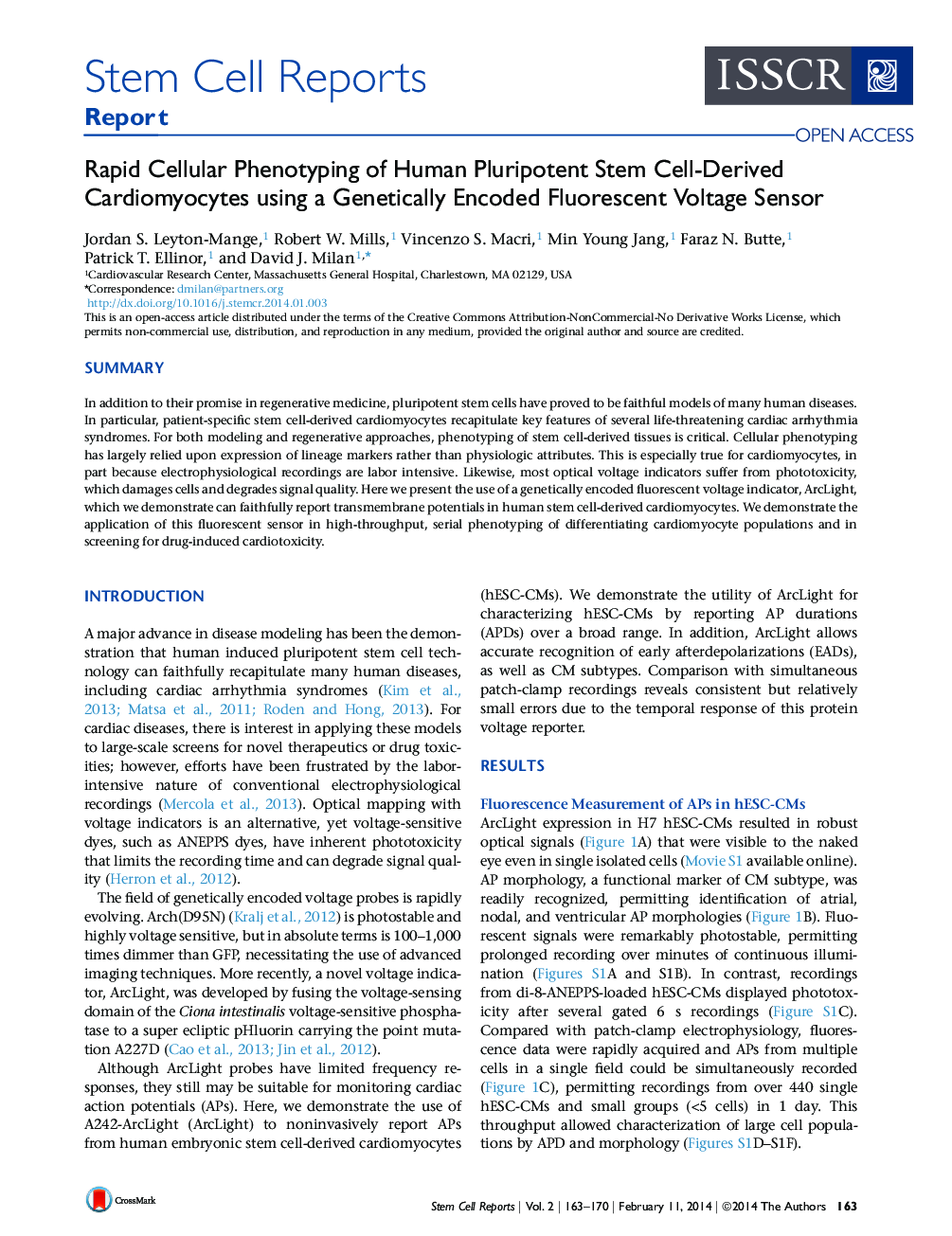| Article ID | Journal | Published Year | Pages | File Type |
|---|---|---|---|---|
| 2093461 | Stem Cell Reports | 2014 | 8 Pages |
•Genetic introduction of a fluorescent voltage sensor into hESC-derived cardiomyocytes•High-throughput electrophysiological analysis of hESC-derived cardiomyocytes•Demonstration of potential of a fluorescent voltage reporter in drug screening assays
SummaryIn addition to their promise in regenerative medicine, pluripotent stem cells have proved to be faithful models of many human diseases. In particular, patient-specific stem cell-derived cardiomyocytes recapitulate key features of several life-threatening cardiac arrhythmia syndromes. For both modeling and regenerative approaches, phenotyping of stem cell-derived tissues is critical. Cellular phenotyping has largely relied upon expression of lineage markers rather than physiologic attributes. This is especially true for cardiomyocytes, in part because electrophysiological recordings are labor intensive. Likewise, most optical voltage indicators suffer from phototoxicity, which damages cells and degrades signal quality. Here we present the use of a genetically encoded fluorescent voltage indicator, ArcLight, which we demonstrate can faithfully report transmembrane potentials in human stem cell-derived cardiomyocytes. We demonstrate the application of this fluorescent sensor in high-throughput, serial phenotyping of differentiating cardiomyocyte populations and in screening for drug-induced cardiotoxicity.
Graphical AbstractFigure optionsDownload full-size imageDownload as PowerPoint slide
